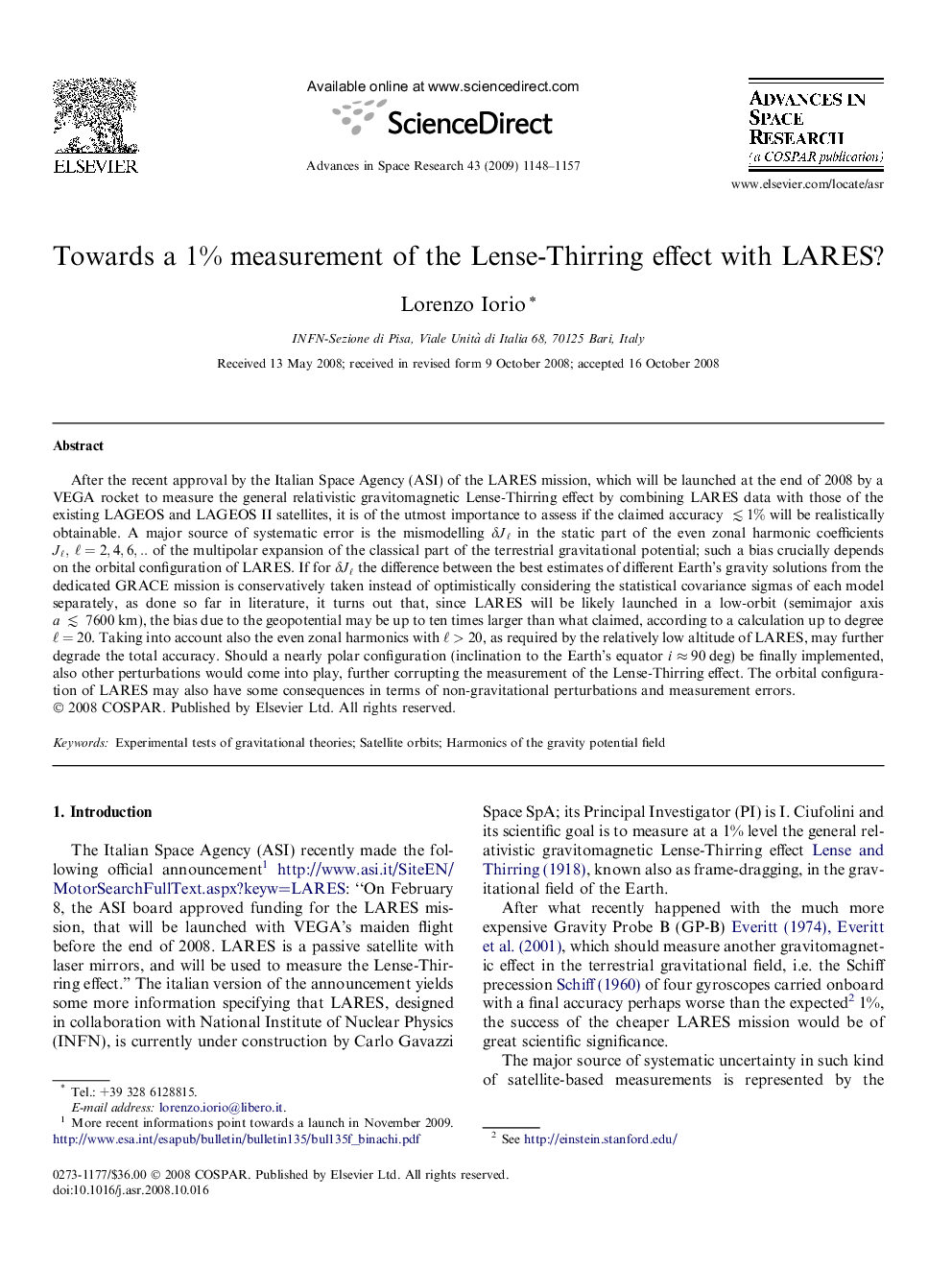| Article ID | Journal | Published Year | Pages | File Type |
|---|---|---|---|---|
| 1767084 | Advances in Space Research | 2009 | 10 Pages |
Abstract
After the recent approval by the Italian Space Agency (ASI) of the LARES mission, which will be launched at the end of 2008 by a VEGA rocket to measure the general relativistic gravitomagnetic Lense-Thirring effect by combining LARES data with those of the existing LAGEOS and LAGEOS II satellites, it is of the utmost importance to assess if the claimed accuracy â²1% will be realistically obtainable. A major source of systematic error is the mismodelling δJâ in the static part of the even zonal harmonic coefficients Jâ,â=2,4,6,.. of the multipolar expansion of the classical part of the terrestrial gravitational potential; such a bias crucially depends on the orbital configuration of LARES. If for δJâ the difference between the best estimates of different Earth's gravity solutions from the dedicated GRACE mission is conservatively taken instead of optimistically considering the statistical covariance sigmas of each model separately, as done so far in literature, it turns out that, since LARES will be likely launched in a low-orbit (semimajor axis aâ²7600km), the bias due to the geopotential may be up to ten times larger than what claimed, according to a calculation up to degree â=20. Taking into account also the even zonal harmonics with â>20, as required by the relatively low altitude of LARES, may further degrade the total accuracy. Should a nearly polar configuration (inclination to the Earth's equator iâ90 deg) be finally implemented, also other perturbations would come into play, further corrupting the measurement of the Lense-Thirring effect. The orbital configuration of LARES may also have some consequences in terms of non-gravitational perturbations and measurement errors.
Keywords
Related Topics
Physical Sciences and Engineering
Earth and Planetary Sciences
Space and Planetary Science
Authors
Lorenzo Iorio,
